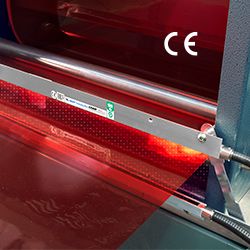Three Ways AI Improves Maintenance Operations for Manufacturers
.jpg)
Maintenance operations are a tricky business. The increasing complexity and volume of maintenance data and disconnected data systems make it challenging for leaders to see and understand the big picture of their resources, assets, and maintenance activities. With so much siloed information, teams struggle to make strategic decisions that minimize disruptions and optimize performance.
The good news is that innovations in AI and analytics are transforming maintenance strategies and operations. These technologies enable teams to streamline critical decisions, see pre-existing maintenance activities, and even predict failures and anticipate future maintenance needs.
In fact, a recent survey shows that AI is becoming a high business priority for manufacturers to improve overall operations, including predictive maintenance. Results showed that 77% of senior decision-makers and maintenance professionals surveyed “want to shift to predictive/proactive maintenance in the future, and AI implementation is viewed as a tool to achieve that goal.”
Work Smarter With Your Data
The key to effective decision-making lies in using all the data available to our organizations, but there’s just too much complex data for humans to explore and analyze for insights. Maintenance teams need fast answers driven by explainable and transparent AI to show them how to respond to events, optimize resources, and improve overall readiness.
AI-driven maintenance decision intelligence tools give teams an unparalleled level of efficiency and insight, automating the integration of varied data sets and surfacing insights across your maintenance operations technology stack. This allows teams to locate opportunities for uptime improvements, mitigate risks more efficiently, and see the cumulative impact for sustainment operations to stay ahead of challenges.
For example, Virtualitics’ AI-powered Maintenance Decision Intelligence (MDI) application combines data across Asset Management (EAM), Resource Planning (ERP), and Field Service Management (FSM) systems to provide teams with efficient analyses and actionable insight, answering critical questions like:
- What is about to fail?
- How should we respond?
- What would happen if we took this action?
- How can we prepare for the future?
Keep Maintenance Operations Running Smoothly
Let’s drill deeper into three key ways AI levels up maintenance operations:
1. Truly Predictive Maintenance
Knowing what to do to keep a piece of machinery from failing provides immense benefits and savings to organizations. Sophisticated AI applications can analyze data from disparate systems to identify patterns and anomalies associated with component failures, assign risk scores to individual components, and recommend the best course of action.
2. Comprehensive Resource Availability
Teams can use AI to quickly identify limiting factors across inventory, workforce, and other resources based on current, scheduled, and predicted maintenance needs. This streamlines work order management by automatically generating, prioritizing, and assigning work orders based on real-time resource constraints and historical trends while also considering impacts on uptime.
3. Inventory Optimization
AI systems can predict demand for spare parts and supplies based on historical usage patterns and current equipment conditions and recommend strategic actions. This reduces the risk of stockouts and excess inventory so that the right parts are always available without tying up unnecessary capital in inventory.
Always Know the Right Next Move
By incorporating AI into maintenance strategies teams can accomplish daily tasks more effectively while confidently taking a proactive approach. With the ability to simulate strategies and surges in asset use and uncover the impact of these on operations and resource availability ahead of time, teams will always be able to stay ahead of maintenance needs.
Aakash Indurkhya graduated from Caltech with a focus on machine learning and systems engineering. During his time at Caltech, he founded and taught a course on big data frameworks and contributed to ongoing research in computational theory at Caltech and computational science at Duke University. At Virtualitics, Aakash manages the development of AI tools and solutions for clients and Virtualitics products and holds several patents for the innovative capabilities of the Virtualitics AI Platform.
Comments (0)
This post does not have any comments. Be the first to leave a comment below.
Featured Product

